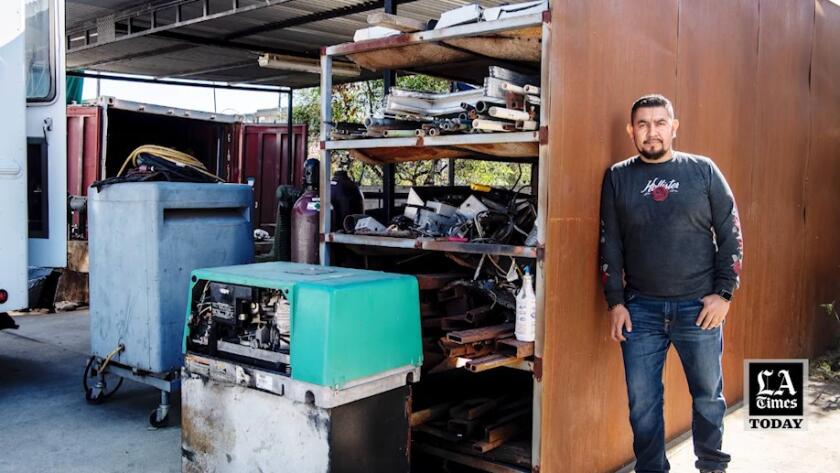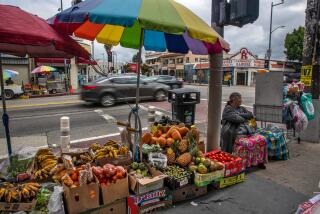How Richard Gomez’s tamale cart design will change sidewalk vending in L.A.
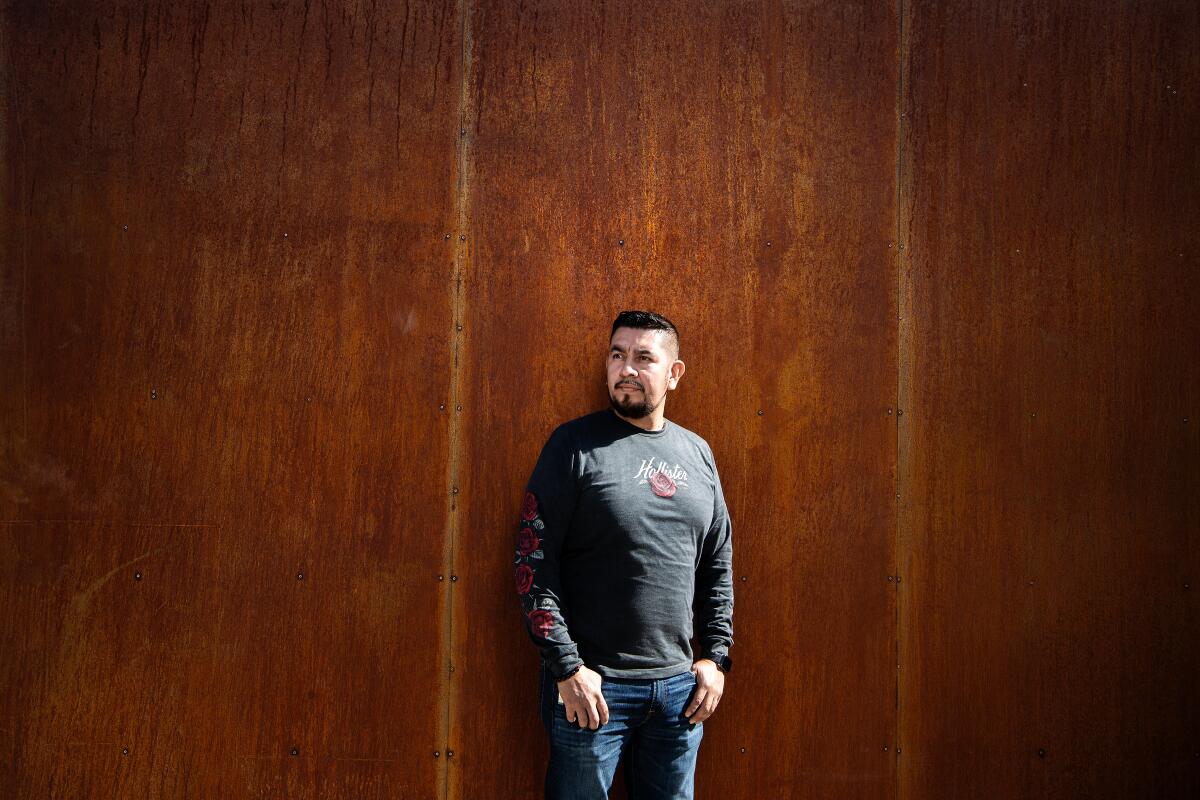
Take one part classic car. Add a heavy scoop of midcentury ice cream cart. Paint in candy shades.
You have now begun to approximate the sleek design of a new tamale cart by Richard Gomez of Revolution Carts. Flared fenders protect the wheels. A flat grill on the front evokes a 1950 Ford pickup. And it comes in a rainbow of brilliant hues: red, orange, pink and baby blue.
Gomez has worked in mobile vending for roughly two decades. By day he is an engineer at AA Cater Truck, a Los Angeles company that designs food trucks for individual proprietors as well as companies such as In-N-Out and King Taco. By night, he runs Revolution Carts, the company he founded to develop a line of carts specifically for sidewalk vendors.

Officially known as the Tamalero, Gomez’s new cart design is revolutionary because it has managed to receive something that once seemed impossible: the approval of the L.A. County Department of Public Health.
In fact, when the design for the Tamalero was greenlighted by the authorities in April, Gomez was in a state of disbelief. “I got a call and they said, ‘Your plan is approved,’” he recalls. “I was like, ‘Let’s wait until we have a stamped plan.’”
When he finally saw that plan, he says he still couldn’t quite believe it. “The satisfaction,” he says, somewhat at a loss for words, “knowing that it may change people’s lives.”
Certainly, the Tamalero — which has been approved to dispense tamales and tamales only — is no small achievement.
For three years, sidewalk vendors in much of Los Angeles County have been operating under a Kafka-esque regulatory conundrum. Sidewalk vending of any kind is now officially legal, but to sell food, vendors need a permit from the Department of Public Health. To get that permit, they need an approved cart. Those carts? Well, they don’t exist.
And they don’t exist largely because it’s impossible to design them. Public health codes are crafted around bricks-and-mortar restaurants, and therefore require extensive storage and refrigeration facilities as well as sanitation equipment like three-compartment sinks. Kounkey Design Initiative, a community development and design nonprofit, recently tried to design a county-approved sidewalk vending cart for grilling meat such as for tacos and bacon-wrapped hot dogs. But the mandated elements required for preparing meat on-site (which are more extensive than for selling premade foods) were so onerous that the cart would have ended up weighing more than 1,200 pounds — almost half the weight of a Mini Cooper.
Good luck pushing that anywhere, much less getting it on a sidewalk.
Without legal carts, vendors turn to operating without permits. As a result, they are hit with fines and regularly have their equipment confiscated, blows that can be devastating for workers who frequently operate in a state of economic precarity. The COVID-19 pandemic has only exacerbated the situation.
This summer, a group of vendors took to the steps of L.A. City Hall in protest, complete with a cardboard mock-up of what a code-compliant cart might look like. It was unreasonably huge.
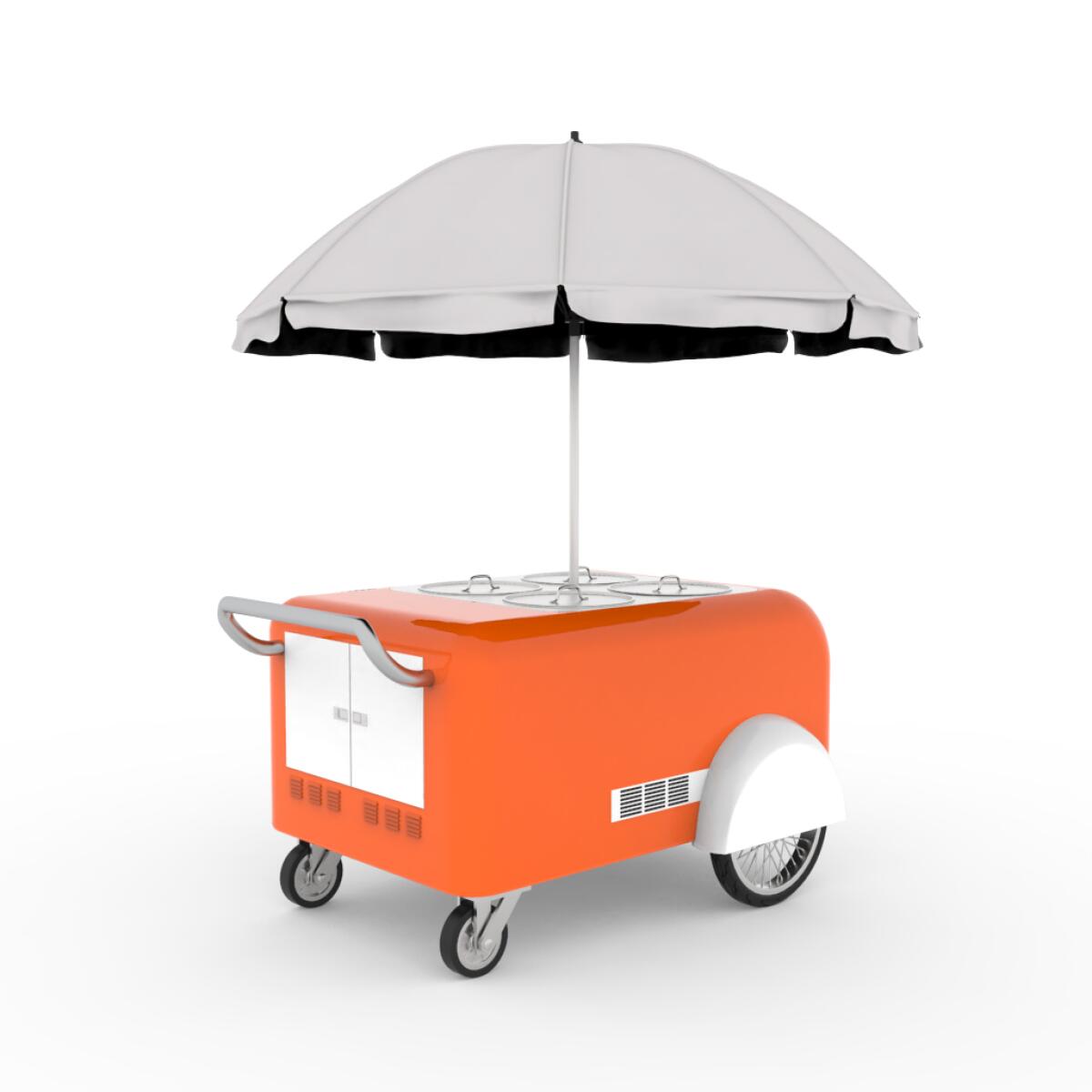
The Tamalero, therefore, marks a breakthrough moment: a step toward producing a cart that both sidewalk vendors and the health department can live with. Gomez has two dozen carts in production and hopes to have them in vendors’ hands before the end of the year. Each unit is priced around $7,500 — an affordable way to establish a food business at a time when a brand-new catering truck can cost upward of $100,000.
Gomez sees his job as not only producing a code-compliant cart but also helping low-income workers establish a livelihood. He tells me about a recent meeting he had with a young mother for whom sidewalk vending meant she could hold a job without having to pay for childcare, since she could keep her toddler with her while she worked.
“These are the kinds of stories I think of,” he says. “That is the biggest thing for me.”
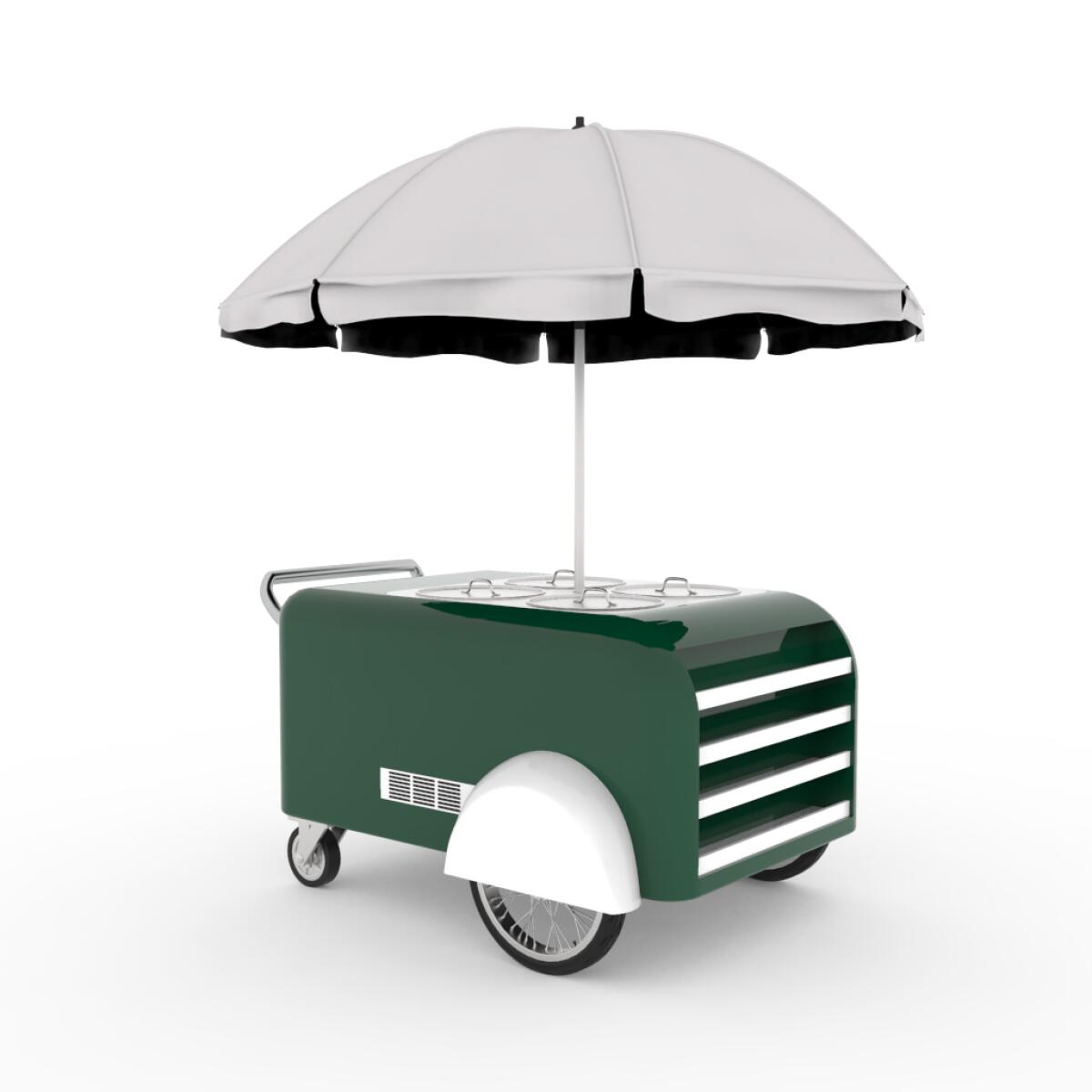
On a warm Sunday morning in October, I meet Gomez at his workshop in Pacoima: a shed and outdoor workspace that is cluttered with all kinds of tools. Like many engineers, he is deliberate and detail-oriented, more interested in talking about health codes and the mechanics of design than his own life story.
He was born in Guadalajara, Mexico, and he and his family immigrated to the U.S. when he was 9, settling in South Los Angeles, where his father went about establishing a trucking company. As a teen, Gomez took an interest in engineering after a high school mentoring program paired him with an engineer at Hughes Aircraft. He later studied engineering at Los Angeles Harbor College.
A family member tipped him off about a possible job at Vahe Enterprises, a company that designs trucks for a variety of commercial uses. For a time, he worked on a range of commercial trucks, including plumbing trucks and step vans. However, he found his calling when he landed at AA Cater Truck, the company’s food-truck division. In that role, he began working on trucks for corporate clients, refining designs and updating trucks to meet evolving health and safety codes.
For about half a dozen years, he focused purely on engineering. “If the Department of Public Health said something,” he said, “we just designed it to meet the code.”
But his views began to change in spring 2008, when the county Board of Supervisors passed an ordinance that threatened food truck proprietors with steep fines and jail time for parking too long in one place. The ordinance triggered outrage in a place where food trucks are an indelible part of the landscape — as well as a public letter, signed by thousands, that declared, “Carne Asada Is Not a Crime.” (The ordinance later was thrown out by a superior court judge who declared it “too ambiguous to be enforceable.”)
That episode, says Gomez, “was a lesson to me that you need to be involved in the code.”
To that end, he became involved with nonprofit development groups such as the East L.A. Community Corp. and the Leadership for Urban Renewal Network (now known as Inclusive Action for the City), the latter of which has helped organize the Los Angeles street vendor campaign. These groups pushed to legalize sidewalk vending in 2018 and are now advocating for regulatory codes that are more in tune with the realities of sidewalk vending.
Case in point: Does a bacon dog vendor really require 12 cubic feet of refrigeration and a three-compartment sink? That is the next challenge Gomez wants to tackle: a health department-approved cart for cooked meats.
Matt Geller is chief executive of the National Food Truck Assn. and runs a company called Best Food Trucks that helps individuals and organizations book food trucks in their area. He and Gomez have been working on advocacy issues related to mobile vending for roughly a decade. Geller says Gomez’s work stands out for the attention he has put into crafting a cart that is not only functional but also sends a message with its aesthetics.
“People like me, we’re like, ‘We need to get something out — form follows function,’” says Geller. “But Richard says the design will be instrumental in the acceptance of this as a new form of eating.”
Gomez, who researched pushcart eating back to the Roman era for his design, says aesthetics are key. “People that don’t want it look at these stands and say, ‘It looks like a third world country,’” he says. “So I want to make something beautiful.”
Mission accomplished.
I’ll have one tamale, please — with a side of style.
Watch L.A. Times Today at 7 p.m. on Spectrum News 1 on Channel 1 or live stream on the Spectrum News App. Palos Verdes Peninsula and Orange County viewers can watch on Cox Systems on channel 99.
More to Read
Eat your way across L.A.
Get our weekly Tasting Notes newsletter for reviews, news and more.
You may occasionally receive promotional content from the Los Angeles Times.

